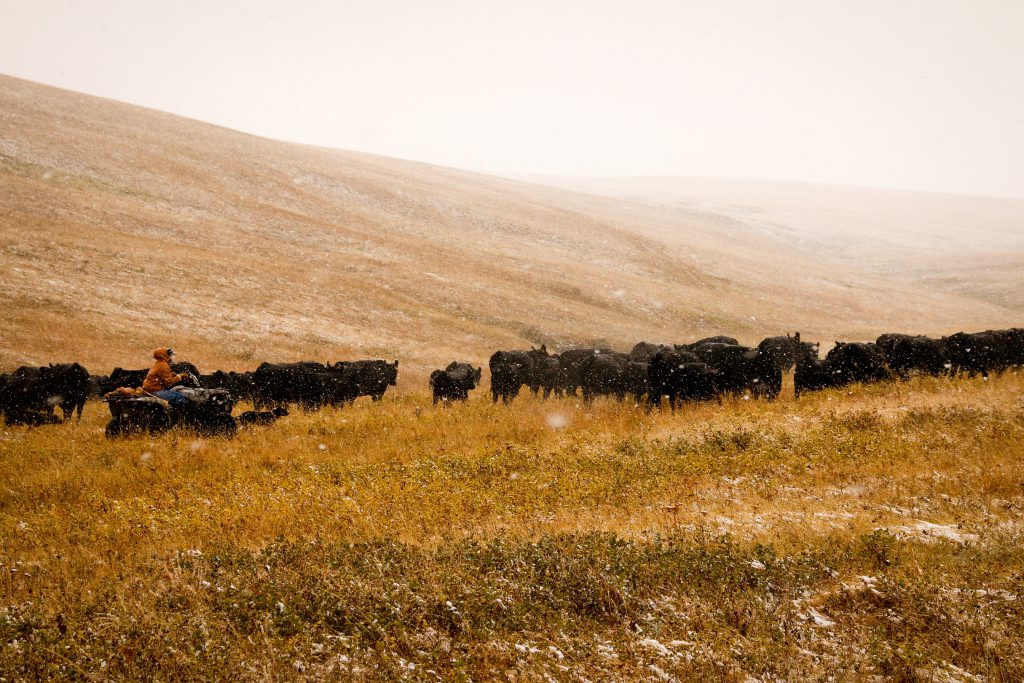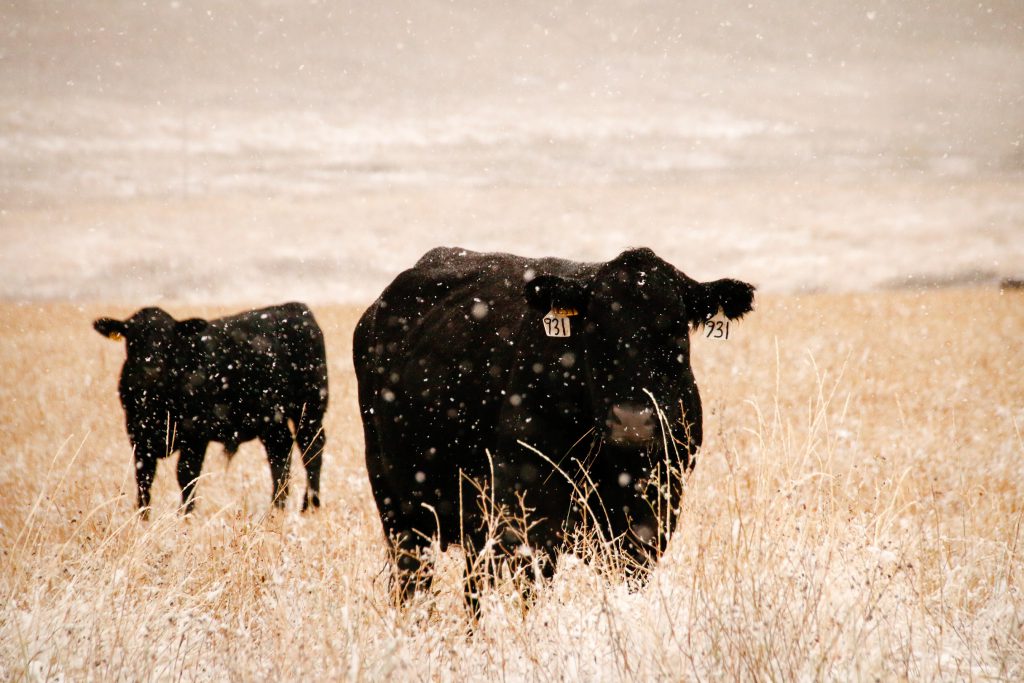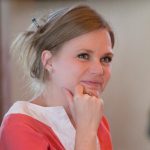Following the Calves: Keaster family checks in
There are two things Bruce Keaster figures he needs in the cattle business: a good relationship with his banker and a good relationship with his cattle feeder.
Check and check.
But those two winning tickets aren’t just luck. That banker relationship requires good ideas, a can-do attitude and the intestinal fortitude to ride out a few storms along the way. Likewise, a cattle feeder requires much of the same – plus the kind of cattle that back it up.
Check, check and check.
“It’s the peace of mind of knowing we’ve built that trust, and I have those two I can call up and know they’re a partner in my business,” Bruce says. “They’re in it with me.”
He and wife Janet ranch with their two adult daughters near Belt, Montana. His great-grandfather homesteaded just on the other side of the central Montana town, nestled between the Highwood and Little Belt mountains. There, they keep 800 mother cows, primarily commercial Angus, but with a growing purebred herd, too.
That’s where the can-do attitude and long-term patience and planning comes in.
When they started artificially inseminating (AI’ing) in the early ’80s, Bruce was frustrated with the resulting females.
“The two things were bad bags and bad attitudes,” he says. “So I thought I’d get to work building a registered herd with the qualities I wanted in my commercial cows.”
He started creating bulls that would add thickness without a huge frame, cows with longevity and calves with performance all around.
Bruce planned to AI until his registered cattle were as good as his commercial herd. It took eight years of selective breeding and hard culling to produce sires he wanted to use beyond clean-up duty, and replacement heifers he was proud to keep on his own place, then begin selling.
He participated in the American Angus Association’s sire evaluation program in the ’90s, which compared progeny of young bulls to those of proven, reference sires. Individual ranch tags were tracked through finishing and harvest to add data to the new expected progeny difference (EPD) numbers.
“I saw that you can really control the whole product by breeding to a higher carcass value. I scratch my head sometimes when I see some of the things going on,” Bruce says, describing a popular sire with a near zero marbling EPD. “I’m sure the cattle are good, but why would you miss out on that?”
There are bulls out that will do the same things, plus positively impact the final product.
“Why use something average or below average when you could get right to the point? If I’m going to raise them, I want them to be something that people want to eat,” he says. “If we’re supposed to compete with Brazil and Australia, we have to start emphasizing the eating experience and the marbling. That’s essential.”
That carcass evaluation program connected him to a like-minded feeder in Columbus, Nebraska, and he’s been selling his calves to Loseke Feedyard ever since.

“It keeps me more aware that I’ve got to keep working at it rather than getting lackadaisical about it,” Bruce says. “We’ve had years when we’ve been close to 60% CAB, and other years when it’s down. But we know we want to keep improving on the carcass.”
He looks forward to that opportunity, partnerships firmly in place.
“Any business that doesn’t have a market is futile. So between having a banker who backs my crazy ideas, and a market with the backing of people that are so close we consider them family – well, that’s worth more than anything else to me,” Bruce says.
You’ll be able to follow along his journey, too, as we feature the Keaster family in our “Following the Calves” series, tracking their calves’ progress from the Montana mountains to the Nebraska feedlot.
“I can’t change the world, but I can work little by little to have something good that comes from our place,” Bruce says.
Until next time,
Laura
Laura Nelson is based in Big Timber, Montana, where she writes, captures images and tells farming and ranching stories. She’s a former CAB Industry Information Specialist who became passionate about the brand and the pursuit of high-quality beef while working at the company headquarters in Ohio. Then wide open spaces, small-town living and those beautiful Crazy Mountains woo’d her back west.
P.S. Travel across the country as we follow other calves from ranch to feedyard this year. The second round is off and running, taking you to veteran cattleman Glenn Cantrell in Oklahoma and to South Dakota where Troy Hadrick is a half a dozen years in to herd improvements.
You may also like
Progress from small steps
Every day is a chance to learn and get better. Thousands of others like my new friends in Alabama are taking steps to meet the shifts in consumer demand, and to know more. Small steps in the right direction can start now. Even if it’s just recording a snapshot of where you are today, a benchmark for tomorrow.
Not perfect, but working to get better
The CAB Cattleman Connection team heard its name called more than once in the virtual ceremonies, and each time came a sense of personal accomplishment, but even better: confirmation that we’re getting better at our craft. I hope that means we’re doing a better job for you.
Beefed up findings
Frank Mitloehner presents his findings on the animal ag sector’s impact on global warming. He explains how cattle counterbalance other fossil fuel sectors, proving that cattle are a solution and not a threat.






